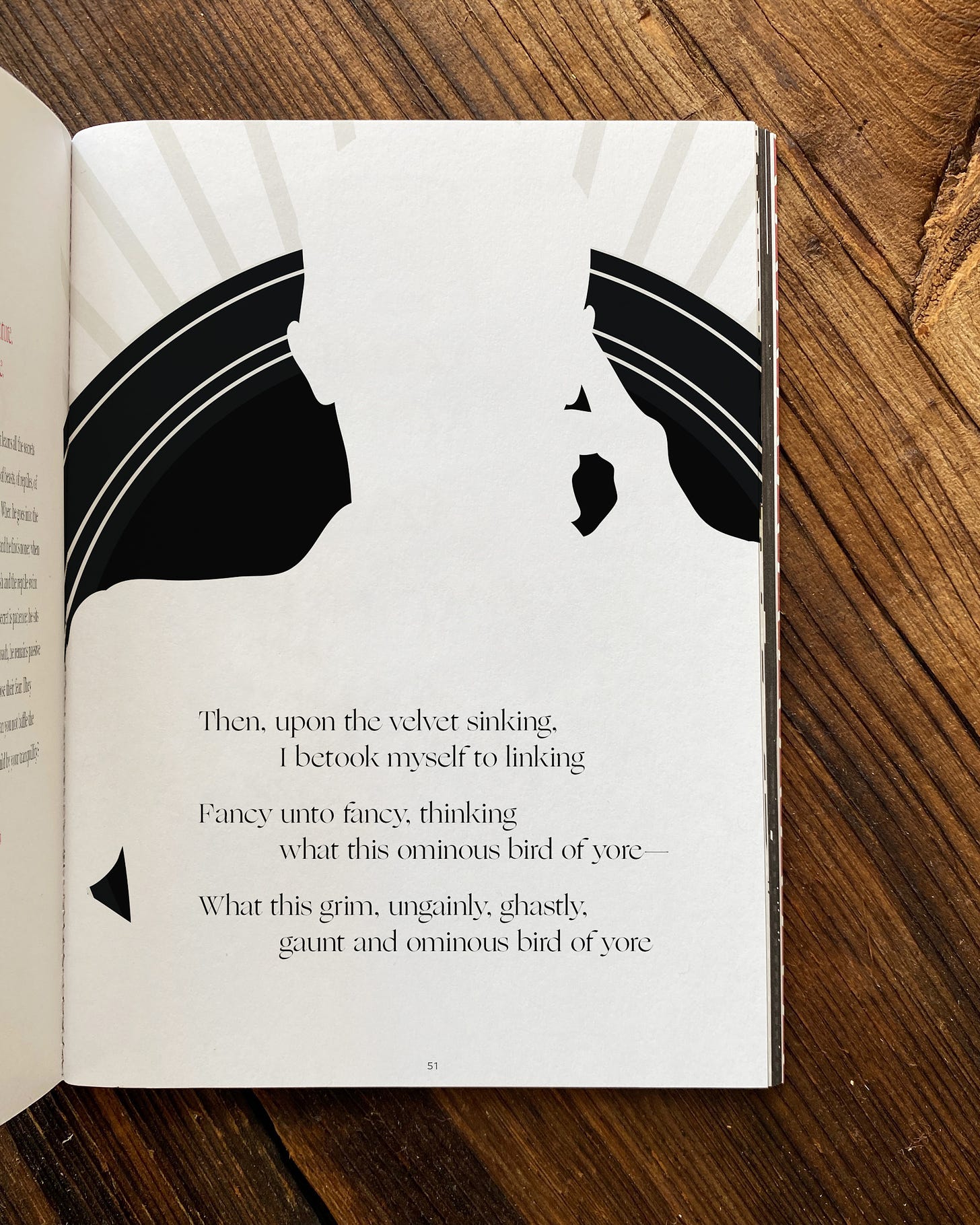
Edgar Allan Poe on the Metaphysics of Panic Attacks
“Darkness there, and nothing more.” - The Raven, Edgar Allan Poe
Please feel free to laugh at me, dear reader, when I confide in you my pathetic tale of a series of random, existential health-related freak-outs. But I implore you, do not show me any sympathy, for I do not deserve any for a few weary days of temporary discomfort. But alas, I had unwittingly left my big boy pants at the cleaner, and sometimes in the course of our hapless lives, perception and reality suddenly part ways, and a supernatural dread is allowed to seep into the gaps in one’s very soul.
So first I had a laryngitis thing, then a scratched cornea thing, then a tooth thing that lead to a swollen face. In each of the cases, I had about two days of pain and then a full recovery. But in each one, I thought this was it forever and ever. I’ll be mute forever. I’ll feel like there’s a pebble in my eye forever. My jaw will be Don-Corleone-swollen forever. To be clear, these were pretty minor issues, but I started to feel like Job with claustrophobia. This was it. It was all downhill from here. And even though I knew these were just random little inconveniences, they felt super intentional and malevolent. Something unseen —otherworldly?— was after me.
You don’t have to be Carl Jung to see where this is going. Call it what you want, a mid-life crisis, PTSD from losing my father to cancer last year, or just good old-fashioned thanatophobia. I mean, it was obvious even to me, as I white-knuckled it through the night with a warm compress on my face, that this absolutely cosmic scope of dread was unwarranted, even a little silly. It was a ghost story I was making up in my delirium, and I needed to just stop it and chillax. But I couldn’t. The story got bigger and bigger, until I couldn’t unwrite it, rationalize it away, or laugh at it anymore. It doesn’t matter that dread is a tale we spin ourselves. If you spin it long enough, it will spin itself, and suck you into its vortex.
That’s what I think is going on with the narrator in The Raven. He’s just doing his homework, minding his own business; but primed by the death of his lost love Lenore, he’s ready to explode. The raven is just the catalyst.
It would be easy to read the descent down the “Nevermore” despair-hole as the contrivance of a writer looking for a good hook. As a young reader, I just wanted to say, “Dude! Stop asking it questions like that! You know what he’s going to say!” But he asks them anyway. And as an older person who has seen more, I know it’s not because he wants the answers, not because he wants to suffer, and definitely not because Poe just had a clever contrivance.
The narrator keeps going because the dread takes over, and sucks him into its vortex.
When I planned out the illustrations for this book, I wanted to make sure that the memory of Lenore was lying in wait for him, lurking in the shadows before the raven ever appears. I worked her into details, like the shape in his fire and the letters in the books he is reading. Her absence haunts him, and in my opinion she is the real source of dread for him. And in his final moments, I always imagined that the thing that drives him over the edge is a manifestation of Lenore, not the raven.
From a certain point of view, the raven is merely a mirror held up to his pain. It behaves like a blank-screen psychotherapist, who just repeats something it heard and unleashes the narrator’s own psyche on himself. The questions he asks start out pretty innocuous, and only become more terrifying after he understands the game they’re playing. He could have just asked, “How much longer am I going to be miserable?” “Nevermore!” “Hurrah! Polly want a cracker?” But instead, he leans into it. He can’t help himself. And I think that Poe understands something about people that goes way deeper than “people like a good poetic motif.” And having personally lost several loved ones to consumption, no-one understood that dread better than Poe.
Here’s a little glimpse inside our illustrated edition of Edgar Allan Poe’s The Raven - book two from our Illustrated Classics Collection. You can also see a flip through over on Instagram.








